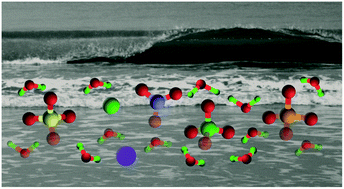Overview of the strategic approaches for the solid-state recognition of hydrated anions
Abstract
The recognition of hydrated anions is a rapidly expanding area in the domain of supramolecular chemistry. Since the beginning of the research field of the supramolecular chemistry of anions, ample literature studies on the recognition of anions have become available. However, there is less literature on the solid-state recognition of hydrated anions in comparison. This highlight covers recent advances in the solid-state recognition of hydrated anions. Structural variation of the anion–water cluster is primarily governed by the shape and charge density of the anions. Given the interest in anion–water interactions, various structural assemblies of anion–water clusters are discussed in this highlight. The review includes both purely organic and metal–organic systems that are potentially suitable for stabilizing anion–water clusters. The recognition of hydrated anions by artificial ligands has attracted huge research interest for potential application in waste remediation, catalysis and transport. Due to their indigenous nature of a high propensity of hydration, inorganic anions can be crystallized with various degrees of hydration; however, their structures are very poorly understood. This review thus gathers the articles published concerning the recently developed field of hydrated anions. This short review might be helpful for researchers to gain an insight into some design features of ligands and anion–water interactions.

- This article is part of the themed collections: Crystalline Materials for Environmental Remediation and 2017 Highlight article collection


 Please wait while we load your content...
Please wait while we load your content...